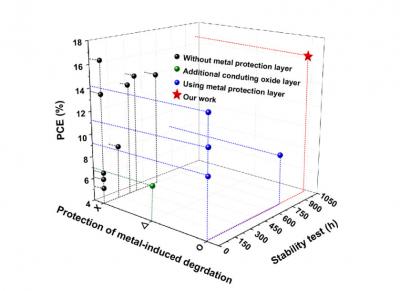A new approach could result in efficient and stable perovskite QLEDs
Researchers at the College of Materials Science and Engineering at Nanjing University of Science and Technology in China have developed a technique that greatly enhances perovskite QLEDs' performance and stability compared to single interface processing.
 The structure of QLED based on QD films passivated without (b) and with passivation (c). Image from Nature Communications
The structure of QLED based on QD films passivated without (b) and with passivation (c). Image from Nature Communications
The team proposed a bilateral passivation strategy through passivating the top and bottom interface of the QD film with organic molecules.








